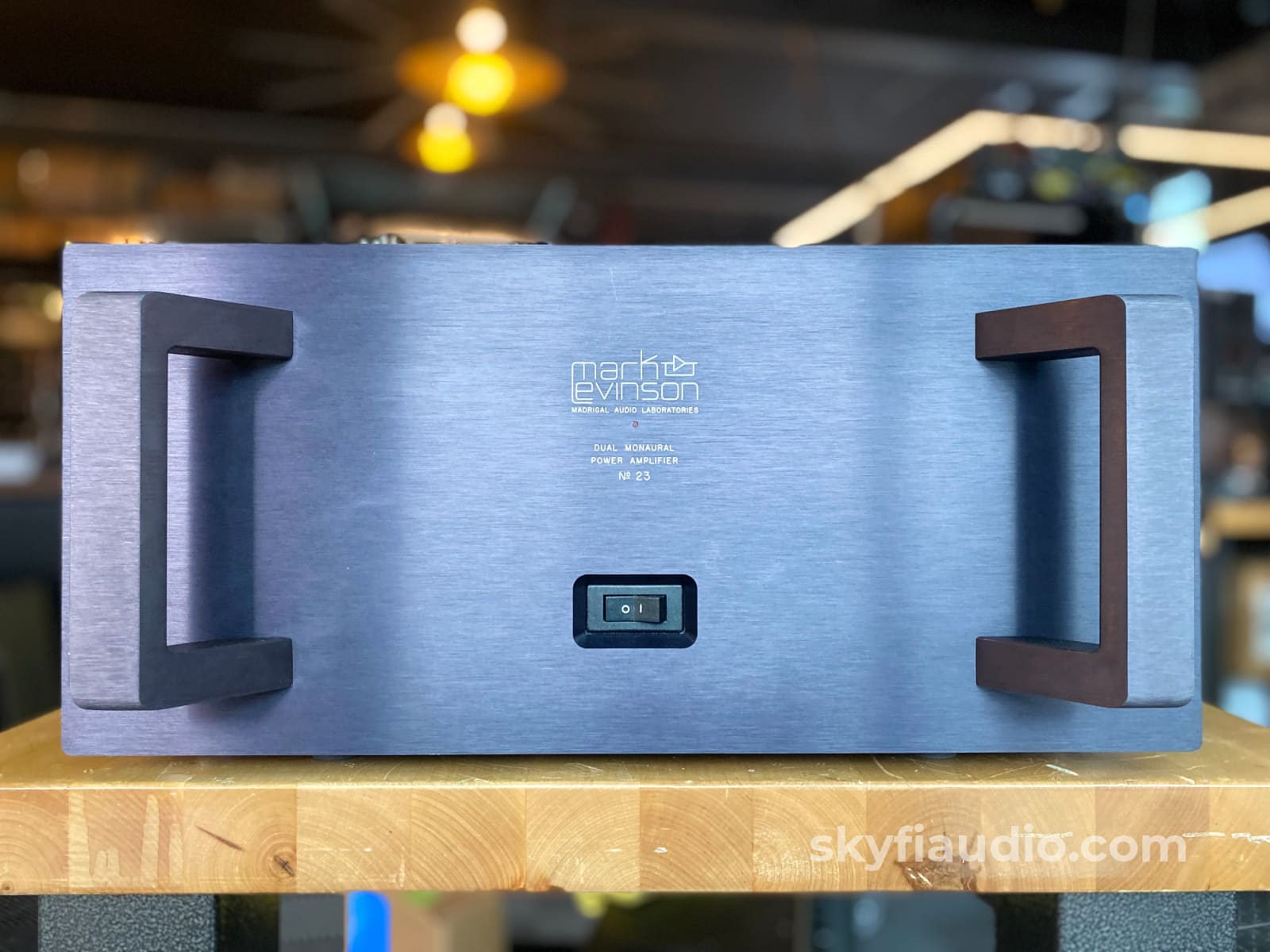
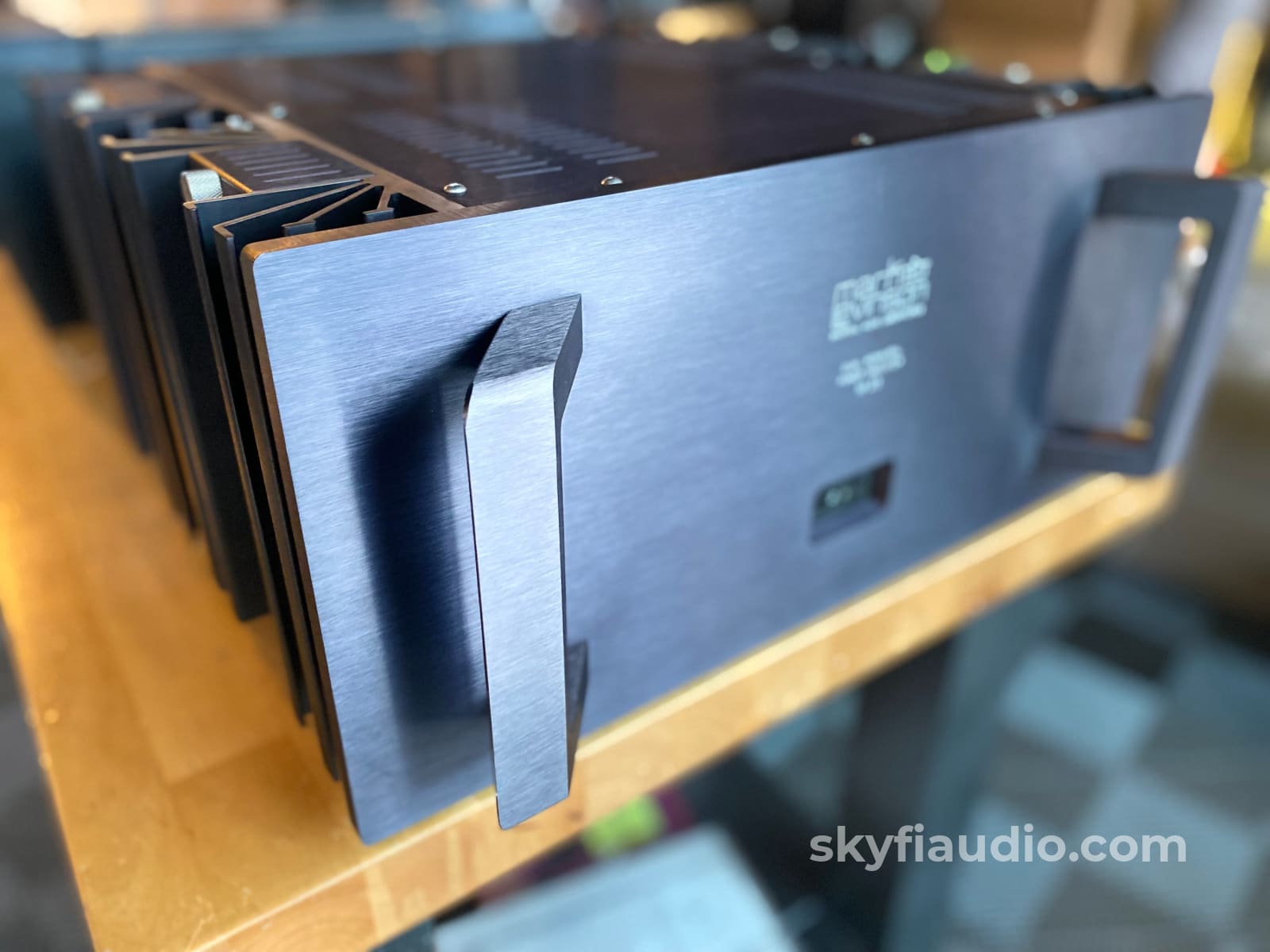
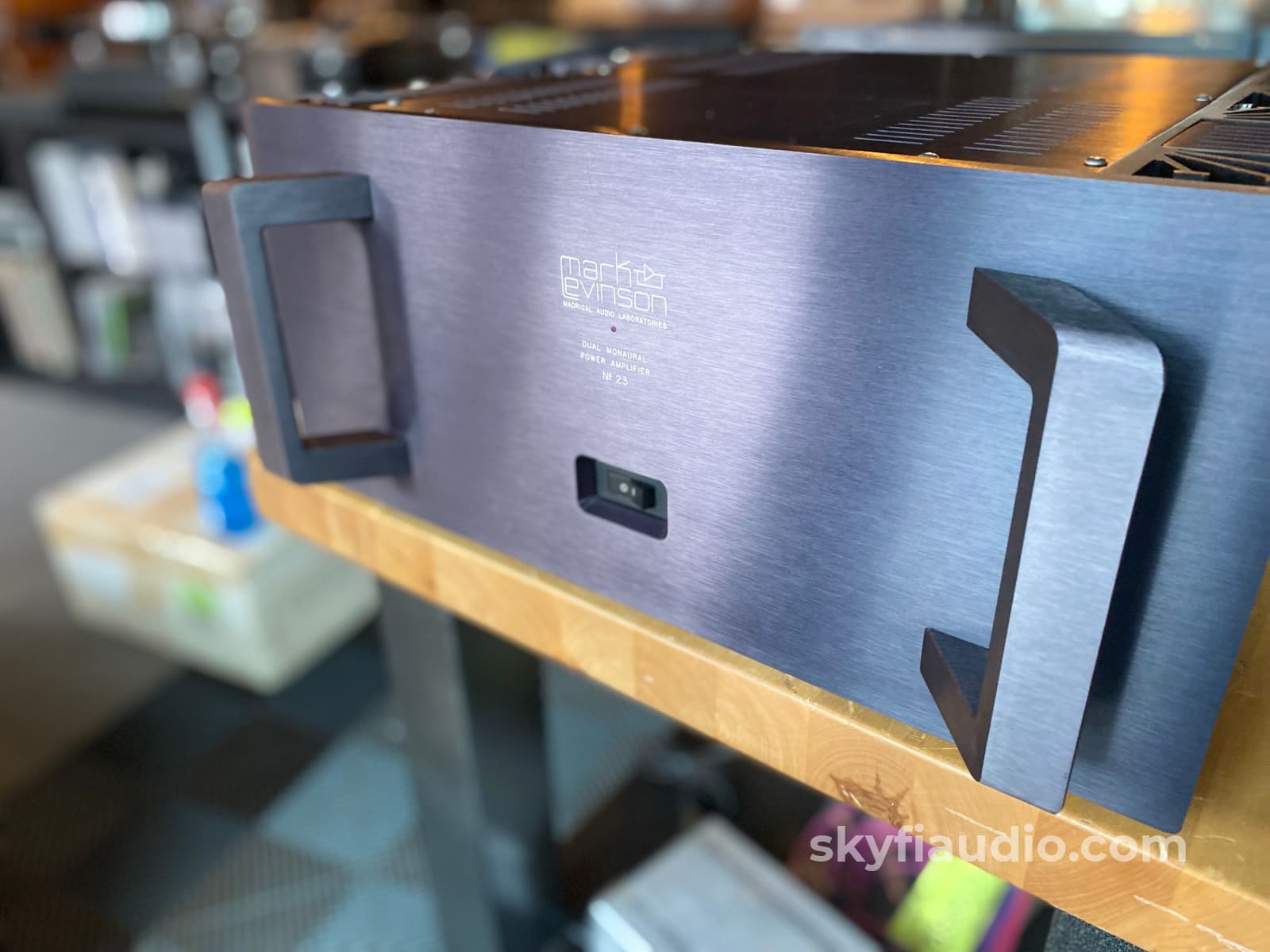
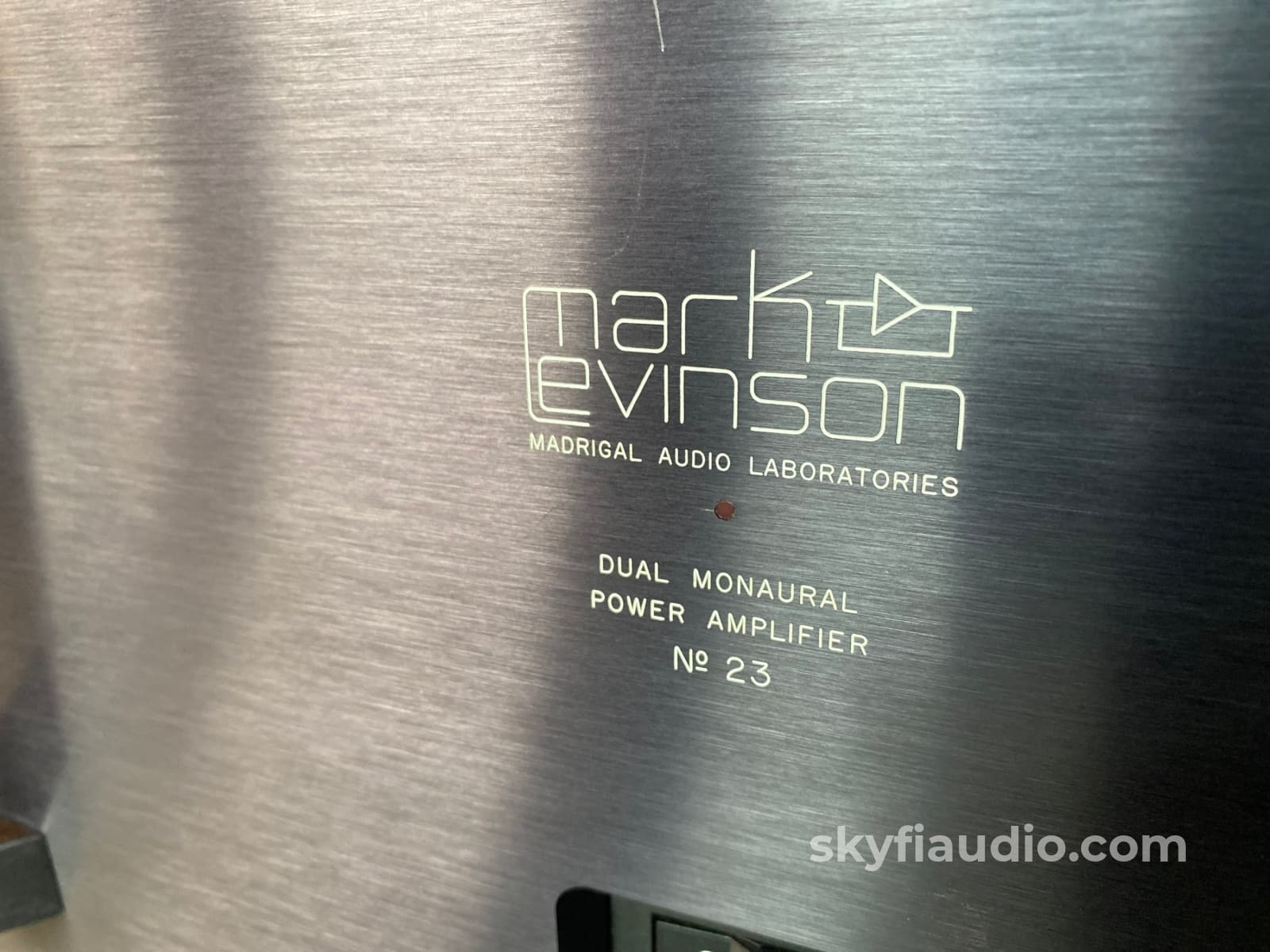
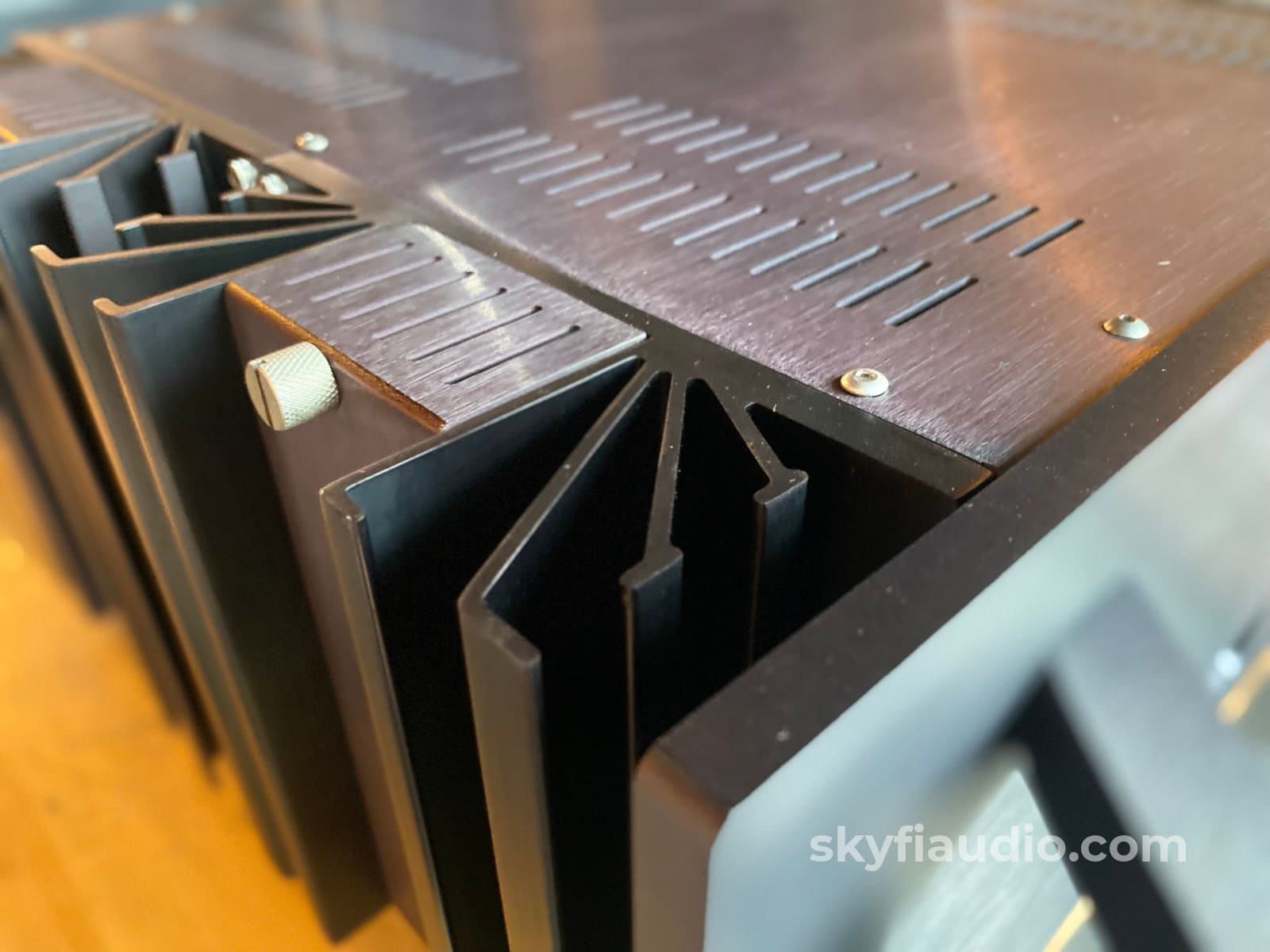
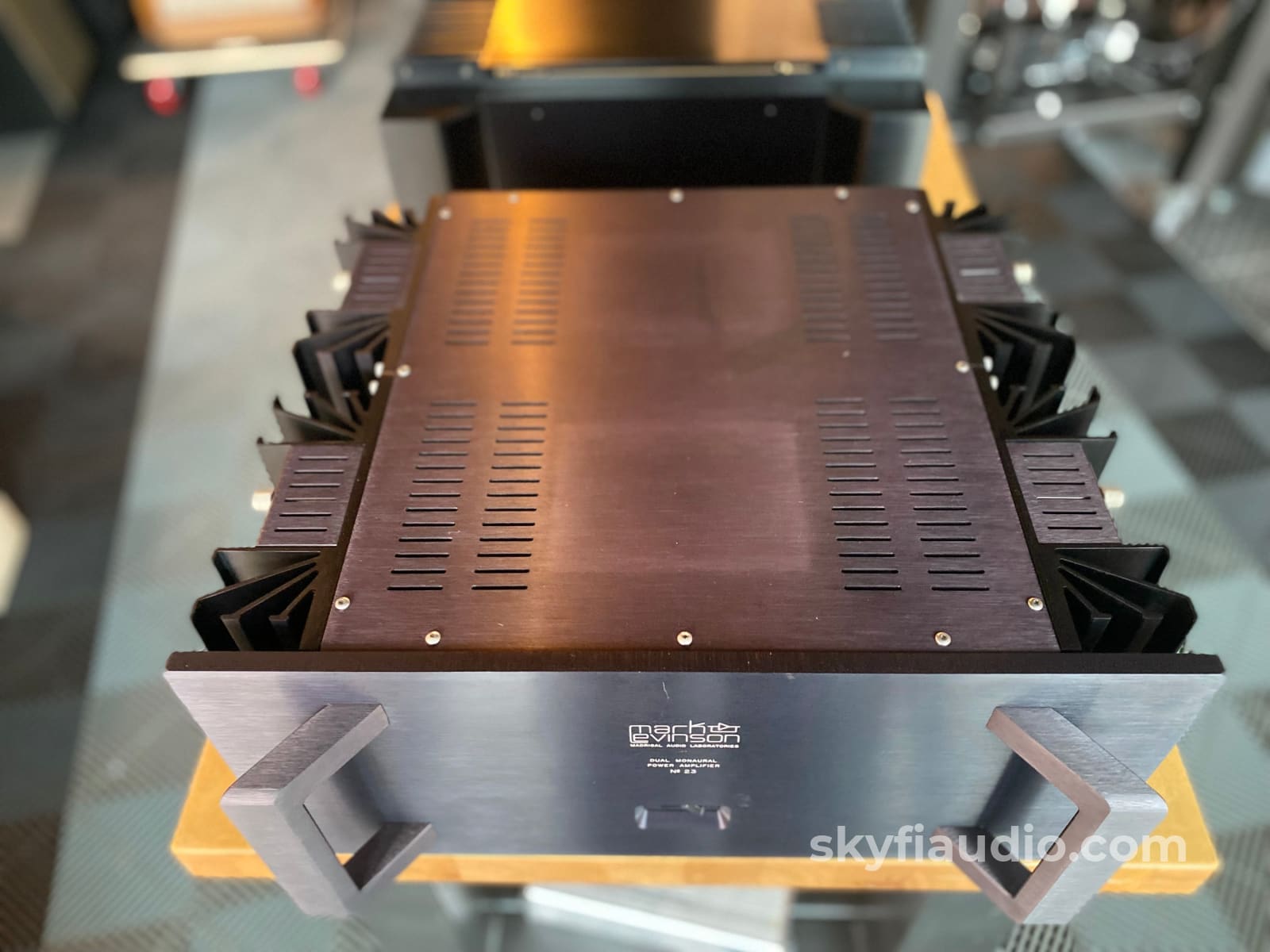
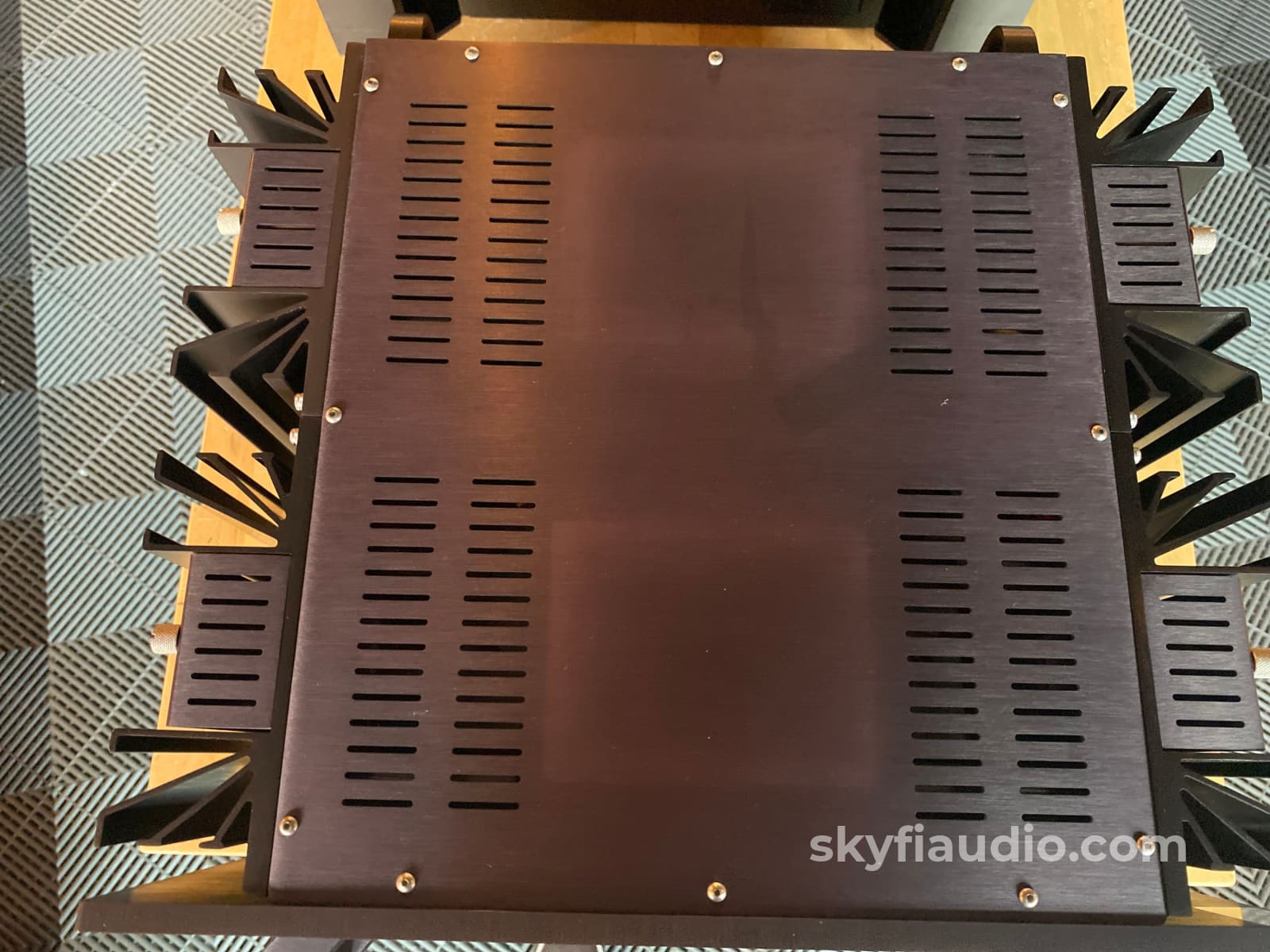
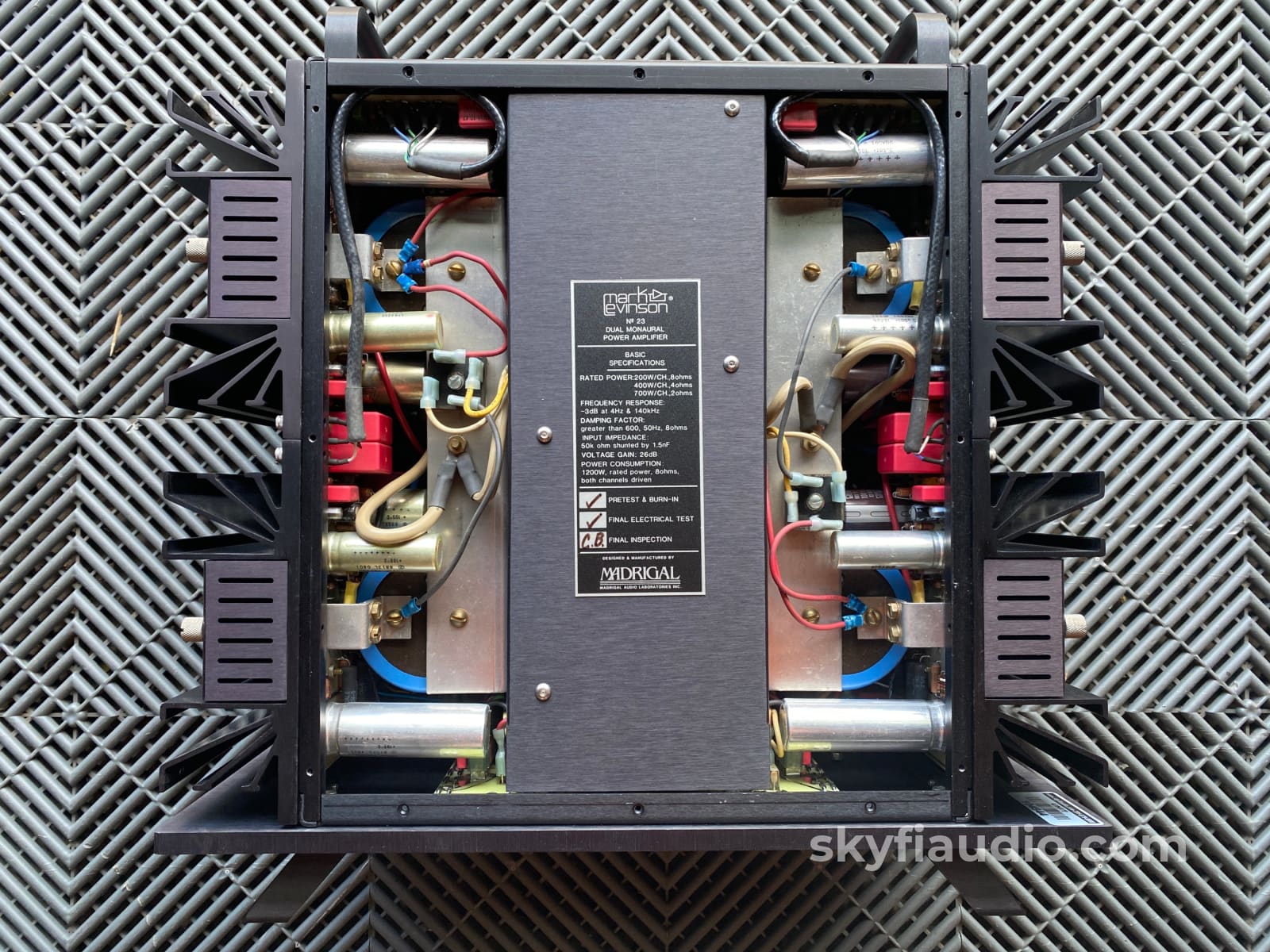
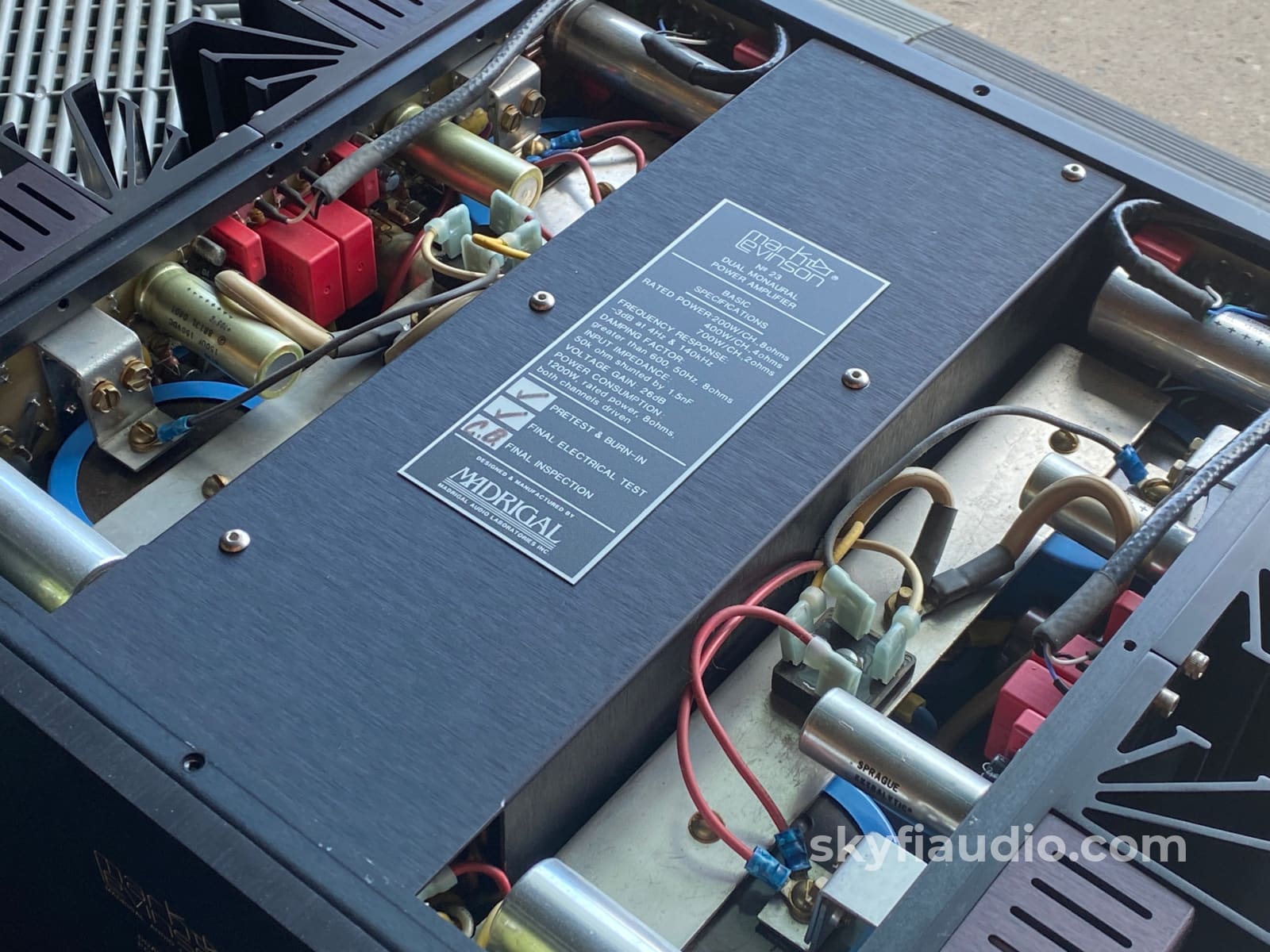

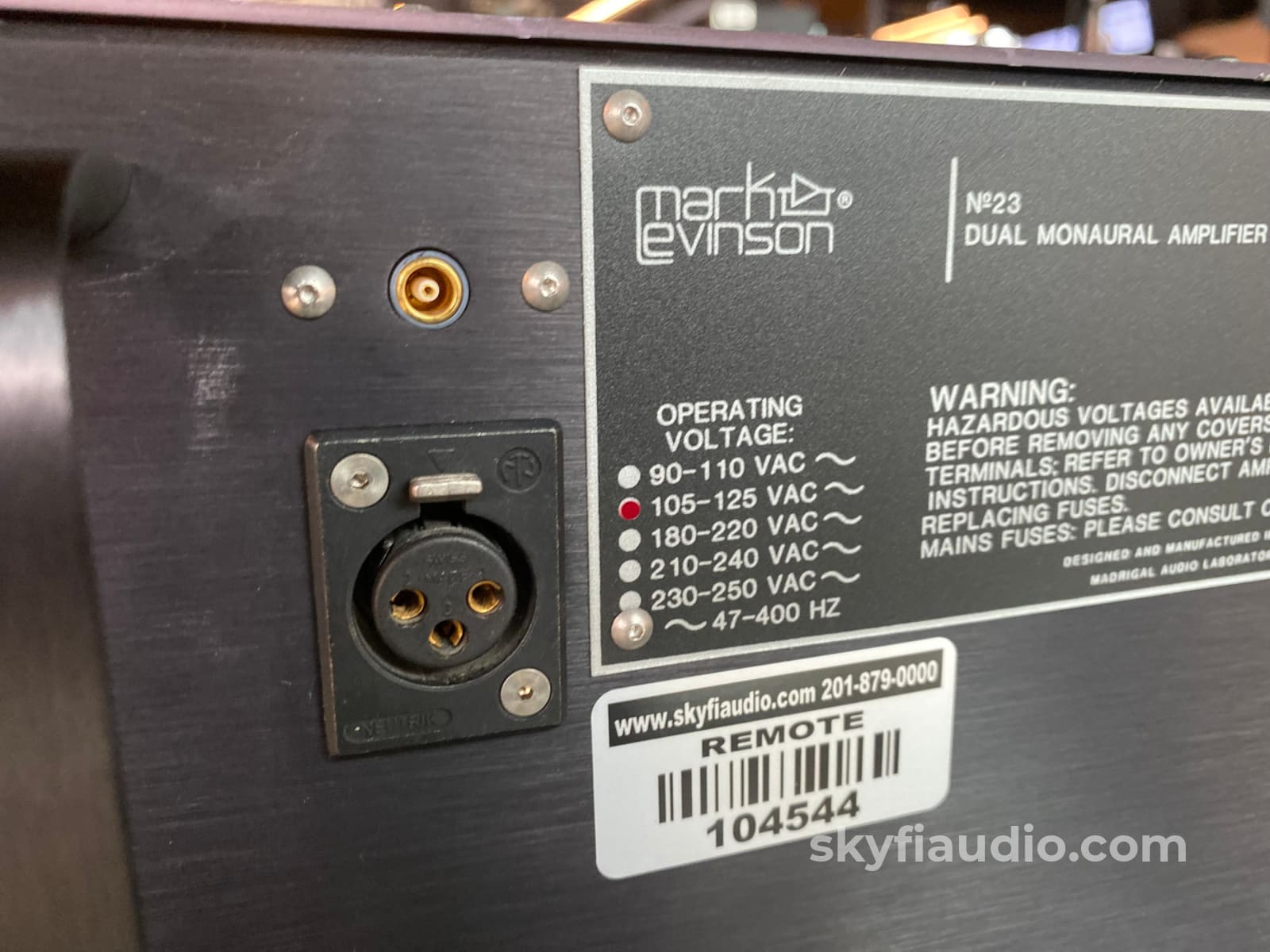
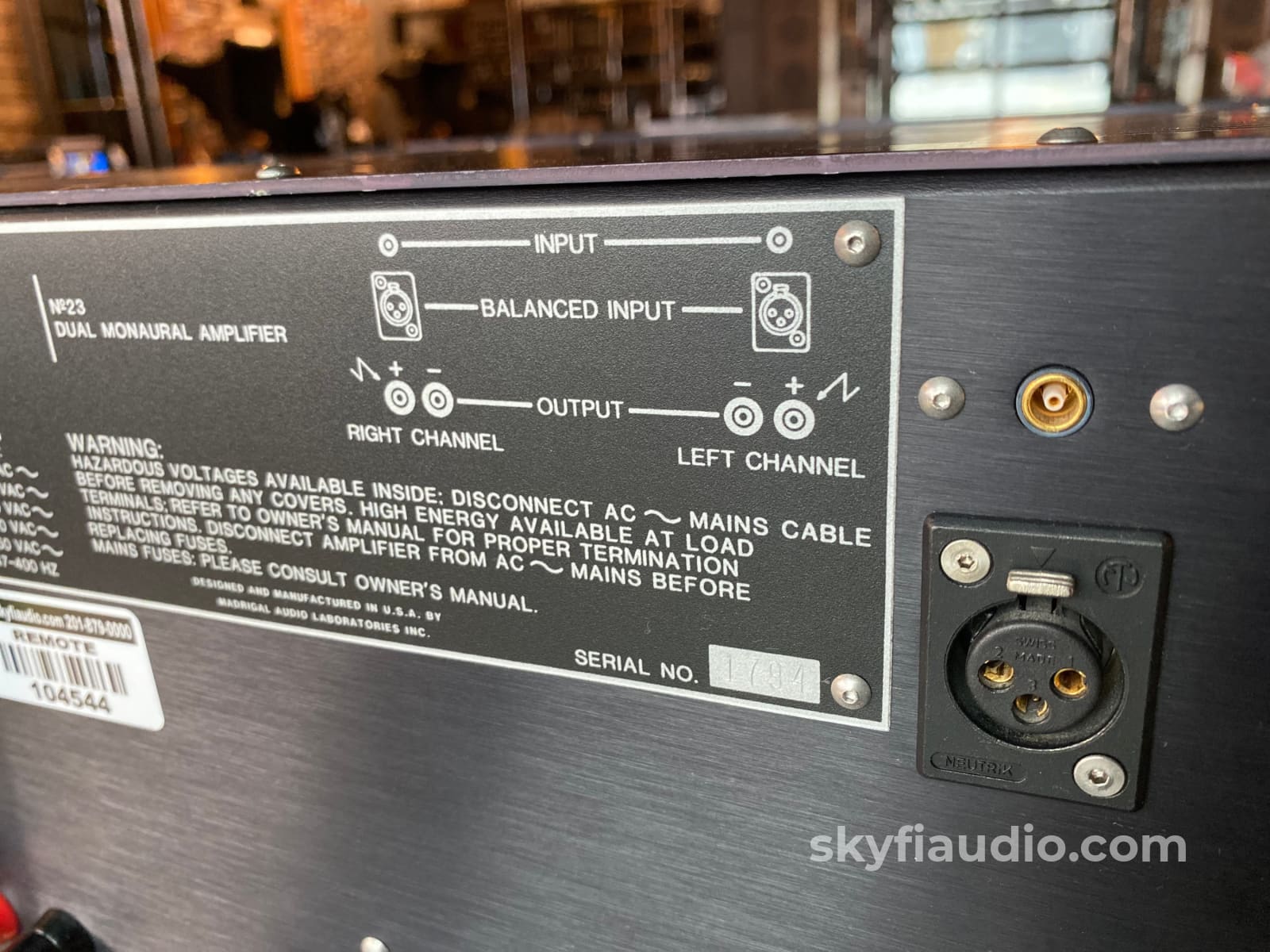
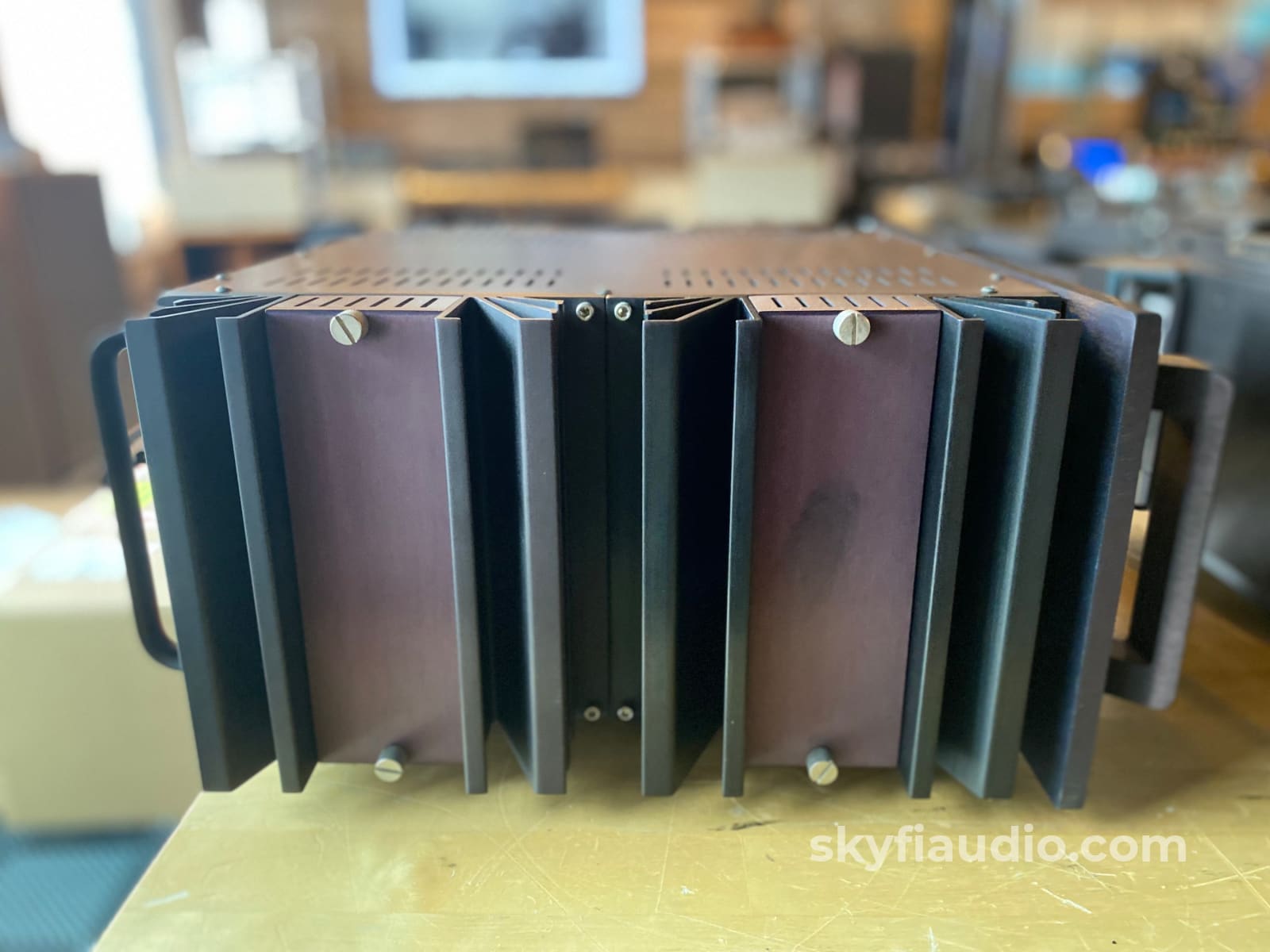
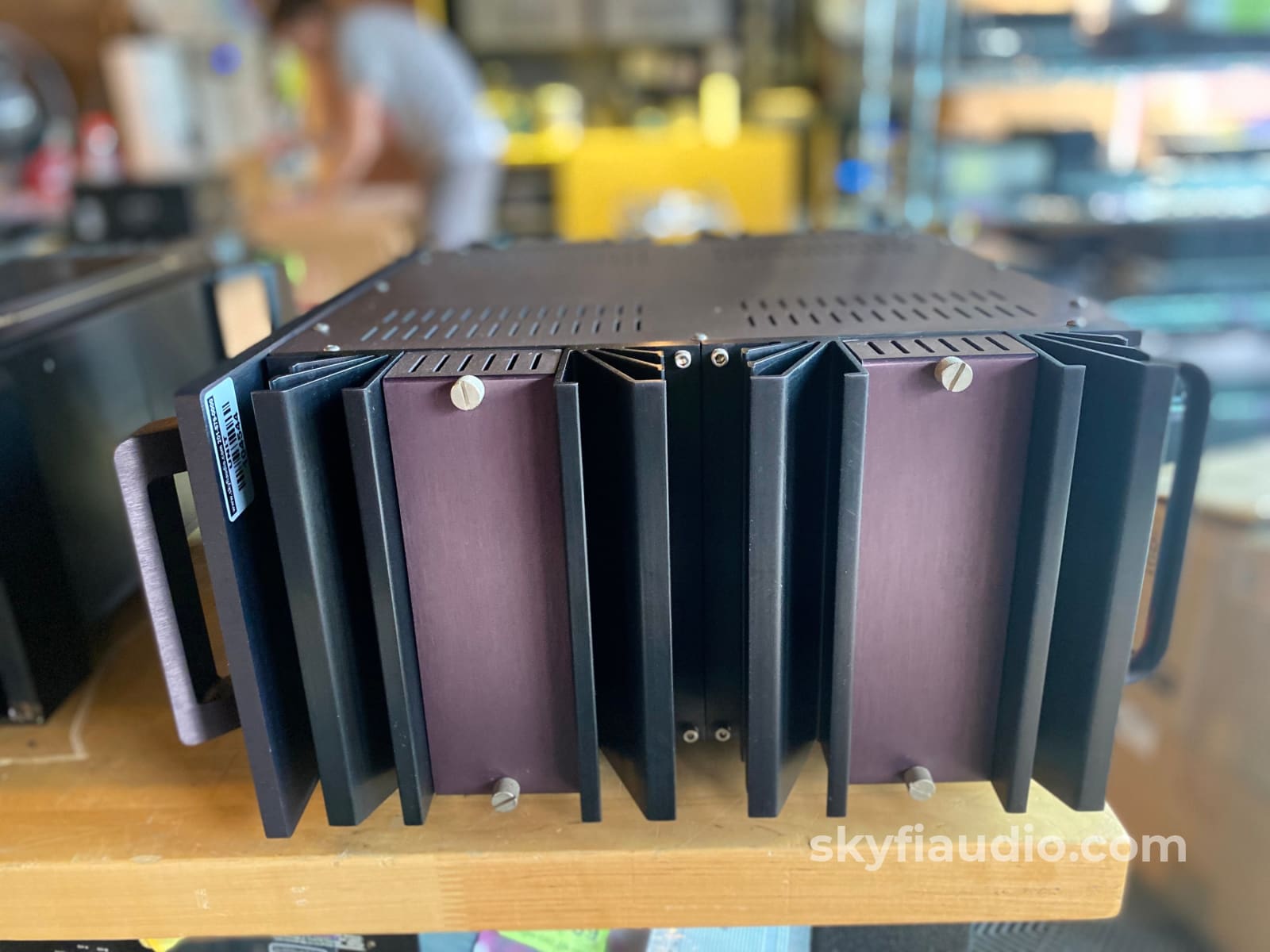
Mark Levinson No.23 Dual Monaural Solid State Amplifier
Free Shipping on Most Electronics - Excludes Speakers and Items Requiring Freight - Contiguous U.S. Only
Pickup currently unavailable at SkyFi 479

Mark Levinson No.23 Dual Monaural Solid State Amplifier
SkyFi 479
479 South Broad Street
Glen Rock NJ 07452
United States
General:
Wonderful amplifier from Mark Levinson's golden era when they were at their highest quality, craftsmanship, and musicality.
Like most Mark Levinson amplifiers from this era, the No 23 needed little to no attention from our in-house technical staff.
Just a quick dusting and a test under full power where it performed like the day it left the factory. Wish we could say the same for the next generation of these amps, which require a full recap in what seems to be 100% of the time.
This example is super clean with no significant signs of use. The top does have a slightly discolored anodized finish common of pieces from this era. The faceplate has a super light scratch just above the brand name, barely noticeable in the pics.
This amp is compact but super heavy, so please be prepared to gather some help to get it into place in your system.
The back features both balanced inputs and CAMAC style inputs, which are a more sophisticated version of an RCA jack.
Ideally this amp would be connected with balanced XLR cables.
You'll also find a standard set of speaker terminals, and a removable electrical plug and fuses for each channel reflecting the fact that it's a dual monaural amp.
200W of output will allow you to power most speakers, vintage and modern, with authority and ease.
Please note that CAMAC adapters/cables are not included with this listing.
Brand Background:
After working in various recording studios and, as legend has it, creating the sound mixer for the Woodstock Music Festival, Mark Levinson began hand-crafting high-end stereo components. His first product, the LNP-1, was a rack-mounted system with two large VU meters and a high performance op-amp module. And with every subsequent product, the legend grew.
,After working in various recording studios and, as legend has it, creating the sound mixer for the Woodstock Music Festival, Mark Levinson began hand-crafting high-end stereo components. His first product, the LNP-1, was a rack-mounted system with two large VU meters and a high performance op-amp module. And with every subsequent product, the legend grew.
Ownership:
Single Owner
Connections:
RCA and CAMAC inputs, 5 Way Binding Posts for Speakers, Removable IEC Power Cable.
General Sound:
Accurate to the recording
Cosmetic Condition:
7/10 = Good. One or two minor scratches. Well Maintained.. See our detailed rating description here.
Working Condition:
Working perfectly and tested in our lab and listening room.
Included:
Just the unit and power cord.
Packing:
Will be packed using our highly developed in-house process and custom packing materials.
Specs:
Rated Power:
Minimum continuous sinewave power, from 20-20kHz, with no more than 0.3% THD (FTC)
8 Ohms - 200 watts
4 Ohms - 400 watts
2 Ohms - 700 watts
Input Impedance:
50k ohms shunted by 1.5nF
Sensitivity (EIA):
141 mV
Voltage Gain:
26 dB
Power Consumption:
Typically 500 Watts
Dimensions:
Height - 8.4" (212.3 mm)
Width - 17.5" (444.5 mm)
Depth - 22.1" (560.2 mm)
Weight:
80 lbs.
Recommended Cables:
Kimber Kable - BALANCED XLR Connectors - Better
Kimber Kable - BALANCED XLR Connectors - Best
Kimber Kable - Speaker Cables - Better
Kimber Summit Series Monocle XL Speaker Cables (PAIR) - Best
Kimber Summit Series BiFocal XL Bi-Wire Speaker Cables (PAIR) - Best If Applicable
Kimber Kable - Power Cords - Better
Kimber Kable - Power Cords - Best
Testing Process:
We start with a visual inspection of all internal components to make sure that there are no signs of heat stress or damage. Capacitors are checked for telltale signs of predictive failure including bulging, shrunken wrappers, or physical leakage. We also inspect the PCBs for discoloration from resistors or transistors that may have been running hot. On vintage units we often spot check select capacitors for value and ESR.
If the amplifier passes visual inspection, we move on to a controlled power on sequence using a Sencore safety analyzer to monitor current draw in real time. Once the amplifier is determined to be safe to operate, we connect it to full AC mains for function and power testing. We connect the speaker outputs of the amplifier to a Sencore PA81 Power Analyzer which acts as a dummy load, DC offset monitor, and oscilloscope interface. We start with a low level 1KHz test signal at the amplifier’s input and slowly increase its amplitude while monitoring the output on an oscilloscope for signs of noise, clipping, distortion, or improper channel balance. We continue increasing the signal level until the amplifier reaches clipping. At this point we take an output power measurement and compare it to the spec sheet of the amplifier to verify proper performance. If the device under test has both balanced and single ended inputs they are both tested at this time. We finish off the bench evaluation with a 1KHz square wave check and a 20Hz to 20KHz sine sweep to assess the amplifier’s frequency response characteristics. This battery of tests will usually reveal if the amplifier has any issues that need further attention.
Before the device leaves the bench, we perform a listening test with actual music using a variety of preferred test tracks. Our benches are outfitted with familiar monitor speakers which help us identify inconsistencies that will not always show up on our test gear. The main things that we are listening for are hum or noise with no signal present, proper center image, clicks, pops, or any other obvious undesirable audio characteristics.
If the unit passes all of these tests it is moved to our long term testing rig where we simulate real word operating conditions for 6-8 hours. This allows us to monitor the unit for signs of thermal runaway or intermittent issues that only crop up when the unit has fully come up to temperature.
Choose options














